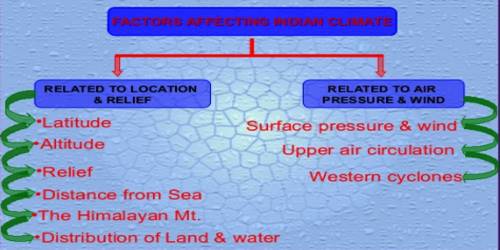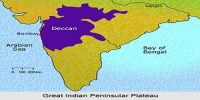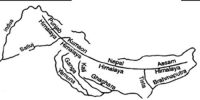Factors determining the Climate of India
The climate of any particular place is influenced by a host of interacting factors. These contain latitude, elevation, ocean currents, topography, vegetation, and prevailing winds. India’s climate is controlled by a number of factors which can be broadly divided into two groups – factors related to location and relief, and factors related to air pressure and winds.
Factors related to Location and Relief
Latitude: The latitudinal and longitudinal extent of the land of India. The Tropic of Cancer passes through the central part of India in the east-west direction. Thus, the northern part of India lies in the sub-tropical and temperate zone and the part lying south of the Tropic of Cancer falls in the tropical zone. An area north of the Tropic of Cancer being away from the equator, experiences extreme climate with high daily and annual range of temperature.
The Himalayan Mountains: The lofty Himalayas in the north along with its extensions act as an effective climatic divide. These cold and chilly winds originate near the Arctic Circle and blow across central and eastern Asia. The Himalayas also trap the monsoon winds, forcing them to shed their moisture within the subcontinent.
Distribution of Land and Water: India is flanked by the Indian Ocean on three sides in the south and girdled by a high and continuous mountain-wall in the north. As compared to the landmass, water heats up or cools down slowly. This differential heating of land and sea creates different air pressure zones in different seasons in and around the Indian subcontinent. The difference in air pressure causes a reversal in the direction of monsoon winds.
Distance from the Sea: With a long coastline, large coastal areas have an equable climate. Areas in the interior of India are far away from the moderating influence of the sea. Such areas have extremes of climate. That is why; the people of Mumbai and the Konkan coast have hardly any idea of extremes of temperature and the seasonal rhythm of weather.
Altitude: Temperature decreases with height. Due to thin air, places in the mountains are cooler than places on the plains. For example, Agra and Derailing are located on the same latitude, but the temperature of January in Agra is 16°C whereas it is only 4°C in Darjeeling.
Relief: The physiographic or relief of India also affects the temperature, air pressure, direction and speed of wind and the amount and distribution of rainfall. The windward sides of Western Ghats and Assam receive high rainfall during June-September whereas the southern plateau remains dry due to its leeward situation along the Western Ghats.















